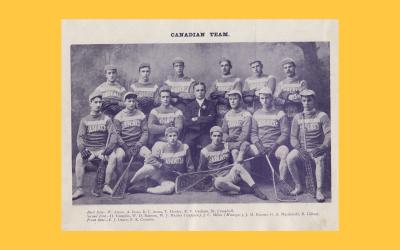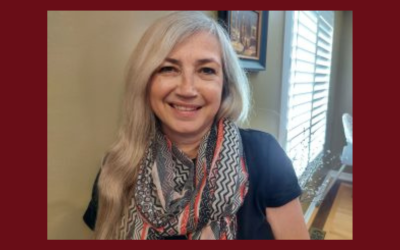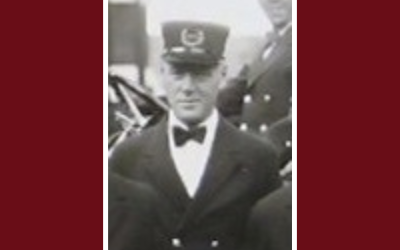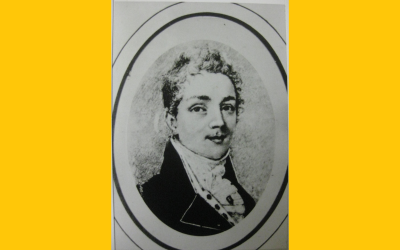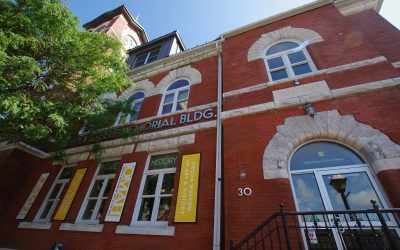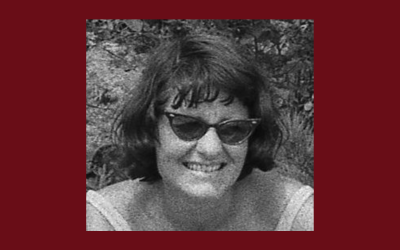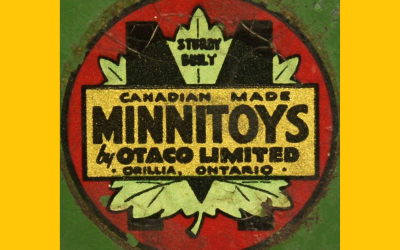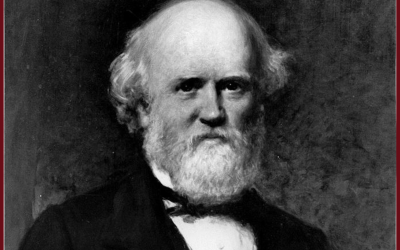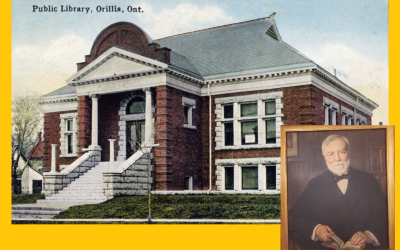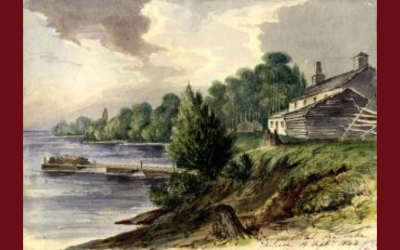How an Orillian Facilitated the American Art Pottery Movement
By Fred Blair
In 1850, at 37 years old, Frederick married Anna Brownrigg in Cincinnati, Ohio. He was employed as a bookkeeper in Michael and Nimrod Tempest’s Hamilton Road Pottery. In 1865, Frederick purchased the company. He employed from 10 to 31 potters in making yellow clay ware, like ceramic fruit jars for the canning industry. His pottery was not always stamped with the company name DALLAS.
About 1869, Frederick switched production to white clay ware to make finer art pottery. At that time, upper class women were purchasing fired pottery to decorate as a hobby. The advertisement in the image here was directed at those ladies.

In 1876, an exhibition was held in Philadelphia to celebrate the Centennial of the United States. Mrs. McLaughlin and Mrs. Nichols of Cincinnati were inspired by the underglaze art pottery produced in England, France, and Japan and they were both determined to learn the technique.
In 1879, Mary Louise McLaughlin formed the Cincinnati Pottery Club. Maria Longworth Nichols was affronted as she did not receive an invitation to join the club. This created some friction between the two ladies. Mrs. Nichols had rented studio space at Coultry Pottery but had a dispute with them and left. Frederick rented her some of his studio space. Later that year the pottery club moved into Frederick’s Pottery as well. However, his kilns were too hot to fire the finely painted glazed pieces. Mrs. Nichols purchased a kiln to fire over glazes and Mrs. McLaughlin purchased one to fire under glazes. There was artistic rivalry between the two ladies but they shared their special kilns with each other. Both ladies had held the record for the largest vase crafted in the US at about that time.
Amanda Merriam’s plaque in the accompanying image was fired in all three types of kilns in the Dallas Pottery in 1882. Mrs. Nichols’ “Dragon Vase”, circa 1879-1880, was fired there as well.


There were over 200 amateur potters in the city and Frederick saw an increasing demand for art pottery in the US. He expanded the size of his pottery production while also investing in clay deposits in several states. The number of potters in his employ increased to over 90 with a similar increase in other staff. His pottery became the largest business in the city. The number of other fine art potteries in the country increased as well and the market for art pottery became saturated in the early 1880s.
On June 9, 1881, Frederick died and his pottery went out of business the following year. Due to the decreased demand for their wares two other large potteries in the city went out of business too. Mrs. Nichols however was undaunted. In 1880, she used family money to purchase a factory and established Rookwood Pottery, which is still in business. If you watch the American Antiques Roadshow, you will have seen some examples of their pottery. Images of these Cincinnati lady’s work can also be found online.
MORE ARTICLES:
THE CANADA-AUSTRALIA SERIES
By David TownIt was another proud first for Orillia, and an astounding accomplishment – but as John Miller stepped off the train at the Orillia platform the only people there to greet him were his family. He had single-handedly negotiated, organized, and managed the...
2022 Year-end Message from the OMAH History Committee
by Trish Crowe-Grande, Chair, OMAH History Committee While this past year saw COVID-19 restrictions ease, the OMAH History Committee listened to its audience and continued to offer its popular History Speaker Series as well as the Annual Carmichael Art History...
MASSEY FAMILY HOME CHILDREN OF CANADA
Albert (Bert) Scaife Massey – OMAH CollectionBy Fred Blair, OMAH History CommitteeIn 1868, Anne Elizabeth Massey was born in Chelsea, London, England. She was the daughter of George and Elizabeth Massey. By 1891, the family had moved to Fulham, London and “Annie”,...
Elmes Yelverton Steele and the Napoleonic Wars
By Fred Blair OMAH History CommitteeIn 1798, Elmes Yelverton Steele joined the Royal Navy in England as an officer cadet. In 1799, the British acquired intelligence that Napoleon had commissioned four Spanish vessels to transport over twelve million pounds sterling...
THE HISTORY OF OMAH’S CLOCKTOWER
By Mary Ann Grant – OMAH History CommitteeWhat’s going on?? If you have been by OMAH recently you will have noticed the scaffolding installed on the building and the work underway. The Sir Sam Steele Memorial Building, specifically the clock tower, is getting some...
WENDY HUTCHINGS – TRIBUTE
Wendy Hutchings – Tribute by Mary Ann Grant - OMAH History Committee The Orillia Museum of Art & History believes that it is important to acknowledge its supporters, those who have made a contribution to the culture of our community and to keeping our local...
Brief History of OTACO
R.W. Phelps was born on January 14, 1888 in Iowa. He ultimately graduated as an Industrial Engineer. Early in his career he caught the attention of A.G. Bush who had a small company that manufactured one-cylinder engines that were used for farm and industrial...
John Ramsay and the Oro Settlers from Islay
By Fred Blair, OMAH History Committee John Ramsay grew up in Glasgow, Scotland. In 1836, at the age of 22, he obtained a lease on the struggling Port Ellen whisky distillery on the Island of Islay in Argyllshire, Scotland. In order to export whisky to the United...
Our Carnegie Library
By Mary Ann Grant, OMAH History Committee Did you know that Orillia’s first official Public Library was a gift from American philanthropist Andrew Carnegie? Andrew Carnegie was responsible for funding the building of libraries worldwide. The extent of the benefits...
HODGES’ LANDING: A BRIEF HISTORY
By Fred Blair The “Historic Hawkestone” plaque, located at 375 11th Line South, Hawkestone, recorded that “Richard Hodges established a landing for settlers” on Lake Simcoe in the 1830s in the community that is now known as Hawkestone. However, land records indicate...

